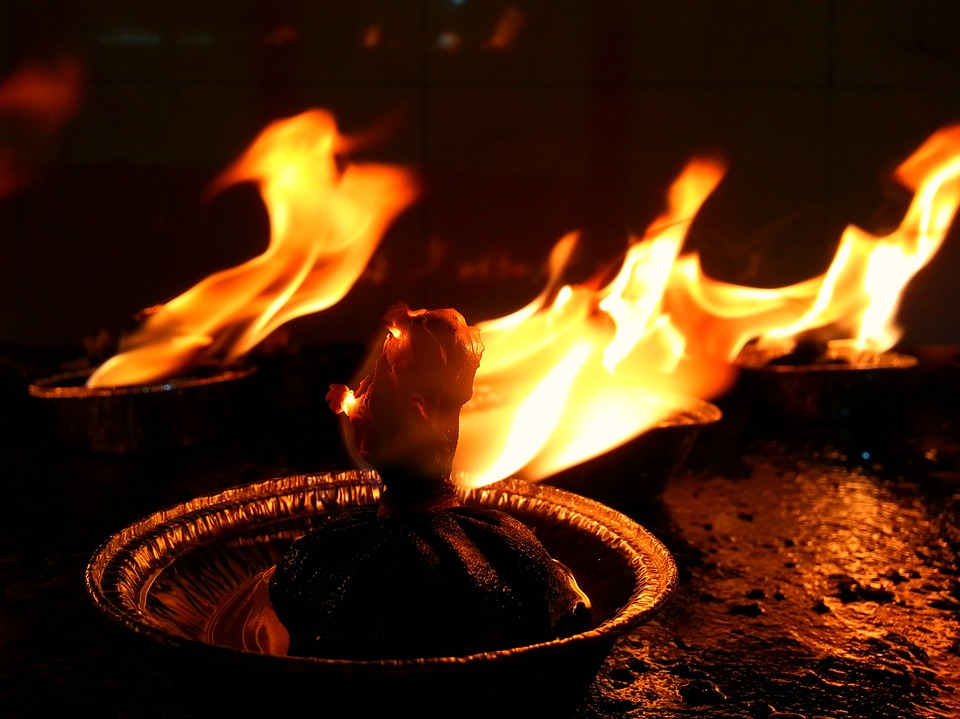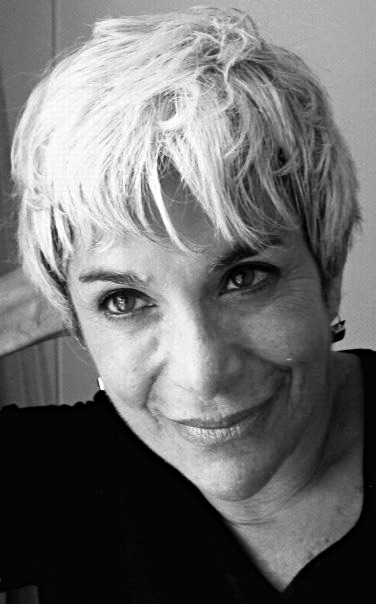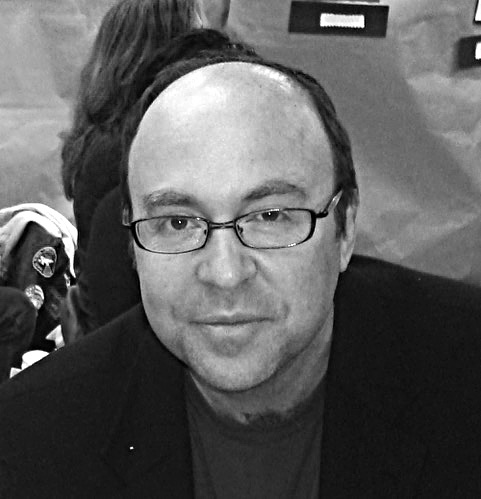 Photo from Max Pixel
Photo from Max Pixel PARSHA: TETZAVEH, EXODUS 27: 20-21
“You shall further instruct the Israelites to bring you clear oil of beaten olives for lighting, for kindling lamps regularly. Aaron and his sons shall set them up in the Tent of Meeting, outside the curtain which is over [the Ark of] the Pact, [to burn] from evening to morning before the Lord. It shall be a due from the Israelites for all time, throughout the ages.”
Rabbi Marc D. Angel
Director, Institute for Jewish Ideas and Ideals

The Ner Tamid (eternal light) was a basic feature of the Mishkan as well as the first and second Temples. Symbolizing the Almighty’s constant presence, it has been a component of synagogues throughout the generations.
In many communities, the lighting of oil lamps is a sign of respect for the beauty and holiness of the synagogue. In Sephardic congregations, those who receive an aliyah to the Torah often make a memorial contribution toward shemen lamaor, oil for illuminating the synagogue.
Rabbi David Ibn Zimra, of 16th-century Egypt, known as Radbaz, handled the case of a man who had the longtime practice of donating a large quantity of oil to light the synagogue lamps. Unfortunately, his financial condition worsened, so he could send only a small amount of oil. The synagogue officers then transferred the honor to a rich person who could donate more. The question: Did the first man, now in poor straits, lose his ongoing privilege of providing lights for the synagogue? Or did this right belong to him, since he had performed the mitzvah for so many years?
Radbaz replied: “The offering of a poor person is as important to the Almighty as an offering of a wealthy person. … If the congregation saw that the oil [he provided] was insufficient, they should have used communal funds [to meet the need] and avoid embarrassing the donor.”
Radbaz underscored the importance of all heartfelt contributions, whether large or small. Concern for human feelings takes priority over financial considerations.
Rabbi Miriyam Glazer
American Jewish University

In a fracked world where nature is being pillaged for so-called human welfare, our Torah nevertheless insists on the profound interrelationship of our spiritual lives and the natural world.
In Parashat Terumah, the Torah describes the menorah in a manner precisely evoking the moriah, the fragrant Palestinian sage from which it may well be derived, a plant known to indigenous people around the world as a source of healing. Now, in Tetzaveh, the Torah relates that the source of the ner tamid, the light to burn before the ark, is the olive, “a light unto the world” (Yalkut Shimoni 1, 378).
Just as the olive’s oil gives light, so do its leaves: As they blow in the wind, their silvery underside creates “silver clouds of light,” as Dr. Ephraim HaReuveni teaches. No wonder our rabbis imagine the olive leaf in the mouth of Noah’s dove bringing “light to the world” and see Sarah’s face shining “like the olive tree” when she hears she will bear a child. Jeremiah calls Israel “an olive tree, leafy and fair.” The rabbis say, “They shed light on all.”
Most moving of all is the vision of Zechariah. He sees an olive tree on either side of the golden menorah. When he asks the angel what they mean, the angel explains, “Not by might, nor by power, but by my spirit, says the Lord” (Zechariah 4:2-6). May we, too, be sources of spiritual light bringing healing and peace into the world.
Rabbi Tsafi Lev
de Toledo High School and Rabbis Without Borders

The advice one generation passes to the next is one part deep caring and an equal part naive hubris. We often ignore the constantly changing contexts of our lives. So, I wonder about a verse that says, “It shall be a hukat olam l’dorotam, a due for all time, throughout the ages.”
Today, there is no Tabernacle and there is no Temple, and yet, God has expectations, as do we, when we pass things down to the next generation: “Do it, because it’s good, because it’s right.” The ner tamid described is not the one we see in our sanctuaries today. In effect, we have not done as we were told or commanded, but live with what we can do, and what works for us.
Change necessitates choice. The 21st century is largely shaped by accelerated change and the power of individual choice as a driver of identity more than by the influence of community. So what are we are saying to our children when we say, “This is how to be. Pass it down forever”? We are saying, “This is meaningful to me, and I want you to have it because I love you.” Only that and little more, but it’s honest and important.
We should be honest with ourselves about the changes the next generation will certainly make and be explicit with them about our love for them when we express our hope for their tomorrow.
Rabbi Denise L. Eger
Congregation Kol Ami, West Hollywood

Aaron and his sons are given instructions for kindling the menorah in the ancient Tabernacle. Hidden in the details yet in plain view is an important concept: Bring your best for God. All the minutiae detailing the preparation of the priests for their eternal duties points to this idea. When they are told to bring clear, pressed olive oil to light the menorah, we understand that only the best and highest grade will do for lighting the Eternal’s light. Olive oil was a commodity in the ancient world. But we are taught here to bring the finest.
We, too, ought to ask ourselves, “Do we bring our best and finest to God and God’s house?” Or do we seek to cut corners? Do we see how little we can do or give and get away with it?
Today, the synagogue is the heir to the Tabernacle of old. It is the place where we Jews try to encounter God’s Divine light through prayer, study and community. Perhaps it is time to stop bemoaning what is wrong with our synagogues and invest once again in bringing the best to God’s house — the best offerings we have and the best of ourselves, to ensure that the light of God emanates eternally from the Tent of Meeting of our day and time. The golden menorah was carried off by the Romans, never to be seen again, but God’s light still shines through our acts of holiness and dedication to our people and our God.
David Sacks
Television writer who podcasts at Torahonitunes.com

If you think about it, it’s kind of funny that God commands us to light the menorah in the Holy Temple. Why? Because God doesn’t need that light in order to see! So, then, why light it at all?
To answer that, we have to go back to before the world was created. Most people think the world started with darkness, and then God said, “Let there be light.” Nothing could be further from the truth. God existed before the world did, and one of the names of God in kabbalistic texts is Ohr Ayn Sof, or Light Without End.
In other words, the starting point of the world is tremendous light — not darkness at all.
The light of the menorah was so holy. The Kotzker Rebbe teaches that it channeled that original light of creation back into the world. Which brings us back to our question. Who was the light for? Us!
This explains the windows in the Holy Temple. Normally, windows are meant to bring in as much light as possible. And yet the windows in the Holy Temple were funnel-shaped — large on the outside but small on the inside. The rabbis teach that this was for the light of the menorah to shine out to the entire world.
As a Light unto the Nations, we have a responsibility to shine this teaching that the beginning of everything is not darkness, but light, hope and the goodness of God.























 More news and opinions than at a Shabbat dinner, right in your inbox.
More news and opinions than at a Shabbat dinner, right in your inbox.